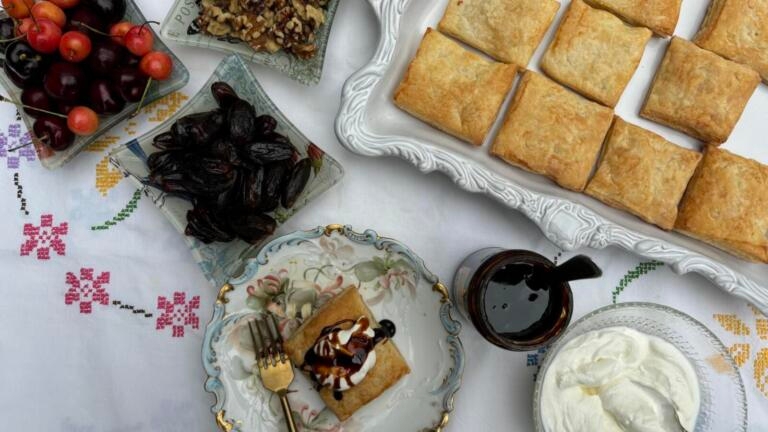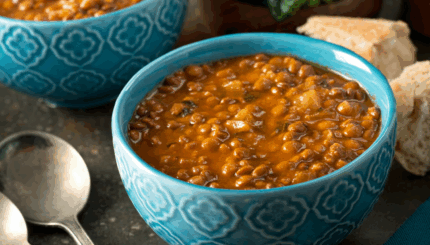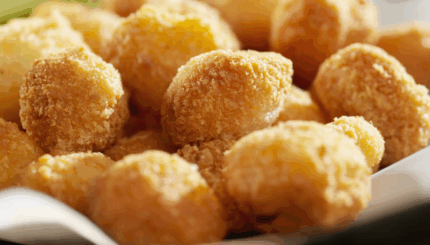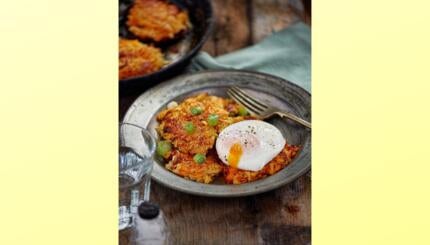As a child growing up in Sydney, Australia, I would often hear my parents wistfully reminisce about eating qei’mar (pronounced khey-mar) for breakfast everyday. Qei’mar, an Iraqi clotted cream made from the milk of water buffaloes, acquired an almost mythic quality in my young imagination.
The cream is made by slowly boiling raw milk over low heat, then cooling overnight, which results in a thick layer of cream. Water buffalo milk has a very high percentage of fat (about 40-60%) which makes it ideal for this recipe.
Kaymak, a word with Central Asian Turkic origins, meaning “melt,” is a similar type of clotted cream. It is popular in Turkey, Greece, the Balkans, Romania and central Asian countries like Kazakhstan, Azerbaijan and Georgia. In Iran, this cream is called sarshir, which means “top of the milk.”
Water buffalo originated in West India and were domesticated about 6,000 years ago. They were traded from the Indus Valley civilization to Mesopotamia in 2500 BCE. Archeological records even show the the sacrifice of water buffaloes on the seal of the scribes of an Akkadian King. The marshes that dominate the south of Iraq are particularly suitable for the raising of water buffalo. While Saddam Hussein, in his attempts to root out the “March people,” tried to destroy the marsh ecosystem, the marshes of southern Iraq are now a UNESCO World Heritage Site and the water buffalo continue to thrive there.
The Nosher celebrates the traditions and recipes that have brought Jews together for centuries. Donate today to keep The Nosher's stories and recipes accessible to all.
For Iraqi Jews, Shavuot is synonymous with qei’mar and kahi, a flaky layered crepe. When we were younger, my mother would make us kahi from scratch, but it’s an involved process of kneading a dough made with vinegar, allowing it to rest, rolling it out and layering it, then frying it with lots of butter.
This year for Shavuot, I decided that rather than struggling with the kahi dough I would bake little squares of puff pastry. But what could possibly come close to the thick, rich creamy qei’mar?
Rachel and I hit on a wonderful solution: We strained equal parts sour cream and ricotta cheese. The results were a mouthwatering smooth, thick, rich cream.
We highly recommend you try this recipe for crispy kahi, clotted cream and silan (date syrup). A typical, traditional Iraqi breakfast food, for Jews and non-Jews alike, it makes a perfectly simple, yet elegant dessert.
As I enjoy it, I’ll be nostalgic for my childhood home on the Sydney harbor and the happy memories with my parents; but, as always, I will cherish the sweet, new memories.

An Easy Twist on Kahi and Qei’Mar
Puff pastry is our secret ingredient to an easy, yet nostalgic, take on Iraqi kahi and qei’mar.
- Total Time: 25 minutes
- Yield: Serves 4-6
Ingredients
- 1 large sheet frozen puff pastry, defrosted and cut into 12 equal squares
- ½ cup full fat ricotta cheese
- ½ cup sour cream
- 1 cup organic date syrup (aka silan)
Instructions
- Preheat oven to 400°F.
- Combine ricotta and sour cream in a fine strainer and allow to drain for 15 minutes.
- Line a baking tray with parchment paper.
- Place puff pastry on the tray, then poke a few holes in each square with a fork. Bake for 10-12 minutes, until golden and puffed.
- Arrange hot puff pastry on a dish. Serve with ricotta cream and a generous drizzle of silan.
- Prep Time: 15 minutes
- Cook Time: 10 minutes
- Category: Breakfast
- Method: Quick
- Cuisine: Sephardi




Wouldn’t the actual clotted cream I can buy in the supermarket be closer to the original than sour cream + ricotta?
Qei’mar is not the same as British clotted cream, but you could substitute it if it’s easier.
Indeed, much easier. Also, heavy whipping cream when heated then cooled produce similar results.